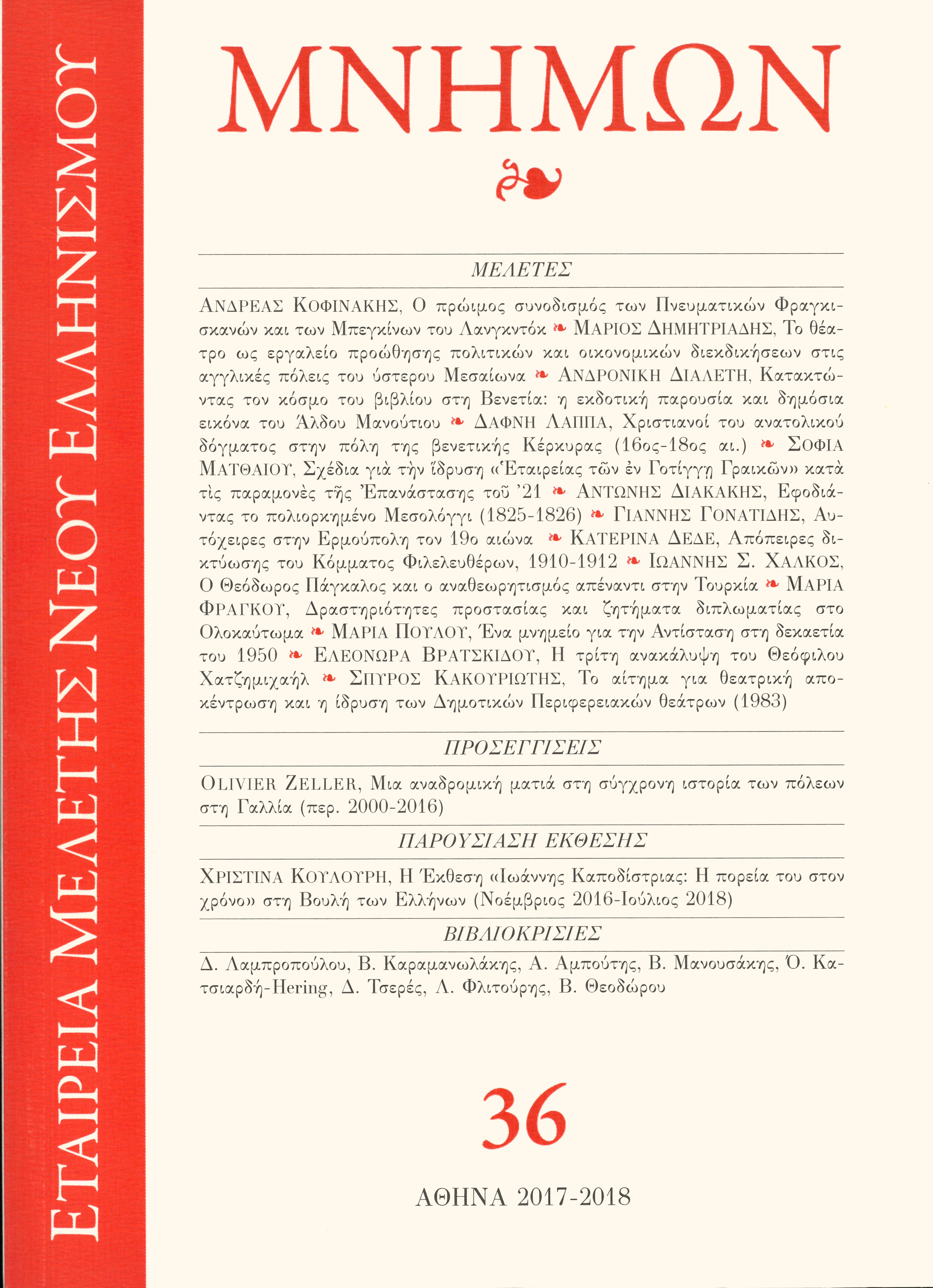TRACING THE EARLY CONCILIARISM OF THE SPIRITUAL FRANCISCANS AND BEGUINS OF LANGUEDOC
Abstract
On 4th and 5th of July 1322 the inhabitants of the city of Pamiers in Languedoc in the south of France were gathered in the city’s cemetery in the presence of the bishop Jacques Fournier (the later pope Benedict XXII), as well as of the inquisitor of Carcassonne Jean de Beaune, in order to attend the public judicial process (sermo generalis) performed by Bernard Gui, the par excellence Dominican inquisitor of Toulouse. A significant number of the sentences that were announced during that day in front of the people concerned the grave mistakes confessed by thirteen secular heretics, men and women alike, who were contemptuously called Beguins, although they themselves used the term Poor Brethren of the Penitence. It seemed that the secular heretics, in their majority artisans and at the same time mainly members of the Third Order of St. Francis, had formed a heretical sect inspired by the radical teachings of the deceased Peter John Olivi, a Spiritual Franciscan theologian, and followed the subversive propaganda of the recalcitrant Spiritual Franciscan friars of the convents of Languedoc and especially those of Narbonne. During the inquisitorial procedures held by Gui and apart from the millenarian (chiliastic) ideas that the heretics confessed and used as an instrument for the eschatological legitimation of their disobedience to the papacy and to the ecclesiastical authority in general, ideas which were mainly based on the Lectura super Apocalypsim of Olivi, the heretics had also confessed tenets and positions that echoed complex ecclesiological issues concerning the limits and jurisdictions of papal authority. In these they stressed the prominence of the General Council and of the Cardinals’ College for the righteous governance of the Catholic Church, challenging at the same time the papal autocracy that recognized pope as the supreme authoritarian ruler of the Church. The lay heretics, even superficially and fragmentary, they confessed the ecclesiological conciliar theories which they had heard in the sermons of the Spiritual Franciscans and which they afterwards read anew –aloud and collectively– in their conventicles from the vernacular translations of the olivian works, mainly of the Quaestiones de Perfectione Evangelica. Thus the heretical confessions indicate a completely different aspect of the heresy of the Beguins and the Spiritual Franciscans of Languedoc, subsuming it in the broader Catholic ecclesiological tradition of conciliarism, which begins with the 12th and 13th century canonists, such as Henry of Segusio (Hostiensis), affects the thinking of famous philosophers-theologians and scholars at the beginning of the 14th century, such as Marsilius of Padua, William Ockham and William Durant the «Younger», and reach its peak during the turbulent period of the Great Schism of the Catholic Church (1378- 1417) and the General Councils of Constance (1414-1418) and Basel (1431-1449) in the works of conciliarists Jean Gerson, Pierre d’Ailly and Nicholas of Cusa among others. Consequently, the very nature of the heretical group is altered, acquiring a new historic dimension, since it emerges as something more than a heretical sect of mere eschatologists. On the contrary, the heretics, friars and seculars alike, are transformed into rational dissenters of the papal autocracy, using ecclesiological arguments –next to the historiographical well-known millenarian ones– to challenge the papal authority and to legitimize their disobedience to it.
Article Details
- How to Cite
-
KOFINAKIS, A. (2024). TRACING THE EARLY CONCILIARISM OF THE SPIRITUAL FRANCISCANS AND BEGUINS OF LANGUEDOC. Mnimon, 36(36), 11–32. https://doi.org/10.12681/mnimon.36762
- Issue
- Vol. 36 (2018): Μνήμων
- Section
- ARTICLES

This work is licensed under a Creative Commons Attribution-NonCommercial-ShareAlike 4.0 International License.
The copyright for articles in this journal is retained by the author(s), with first publication rights granted to the journal. By virtue of their appearance in this open access journal, articles are free to use (with the exception of the non-granted right to make derivative works) with proper attribution for non-commercial uses (licence Creative Commons 4.0). EKT/NHRF retains the worldwide right to reproduce, display, distribute, and use articles published in Mnimon in all formats and media, either separately or as part of collective works for the full term of copyright. This includes but is not limited to the right to publish articles in an issue of the Journal, copy and distribute individual reprints of the articles, authorize reproduction of articles in their entirety in another EKT/NHRF publication, and authorize reproduction and distribution of articles or abstracts thereof by means of computerized retrieval systems.


